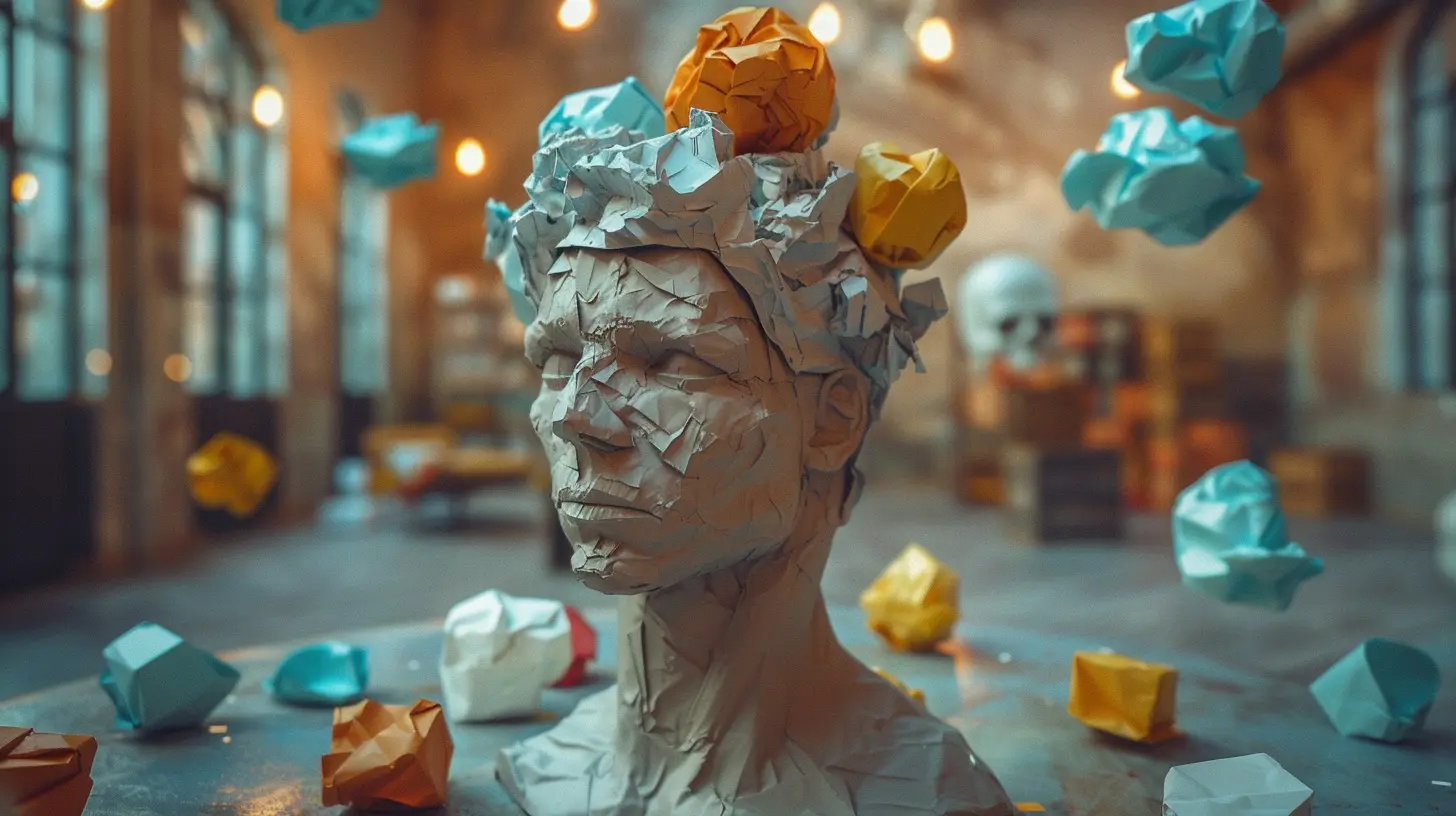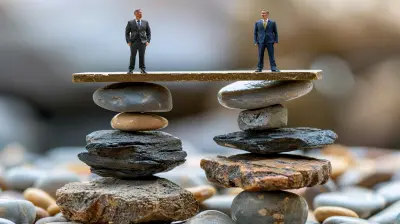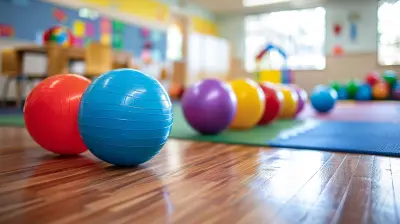The Role of Creativity in Problem-Solving Skills
16 September 2025
Let’s be honest—when most people hear the word "problem-solving," their minds immediately jump to logic, statistics, maybe even a spreadsheet or two. But what if I told you that creativity—yes, that artsy, colorful, free-spirited thing—is actually a powerhouse when it comes to solving problems?
Sounds strange, right?
But here’s the deal: creativity isn't just for artists, musicians, or those quirky ad folks. It’s a fundamental skill that injects life into everyday problems, helping us untangle complex issues in smart, meaningful, and often unexpected ways.
In this article, we’re diving deep into the role of creativity in developing effective problem-solving skills. Whether you're a student navigating tricky assignments, a teacher trying to inspire young minds, or just someone who loves learning how the brain works (high five!), this one’s for you.
What Exactly Is Problem-Solving?
Before we jump headfirst into the creative stuff, let’s understand what problem-solving really means.At its core, problem-solving is the process of identifying a challenge, analyzing it, and coming up with a solution. Sounds simple, but depending on the problem, it can get pretty intense. Think of it like being a detective: you’ve got clues (information), suspects (possible solutions), and a goal (resolve the issue efficiently).
Here’s the catch—logic alone doesn’t always cut it. That’s where creativity swoops in like a superhero without a cape.
Creativity: The Secret Ingredient in Problem-Solving
Let’s flip the script for a moment. Imagine trying to solve a puzzle, but instead of fitting pieces where they’re "supposed" to go, you start experimenting. You tilt the pieces, try new angles, look at the bigger picture, maybe even create your own pieces.That’s creativity at work.
Creativity allows us to go beyond the obvious and explore ideas that aren't always found in textbooks. It pushes us to ask questions like:
- What if I did it differently?
- Is there a better way?
- Can I combine two solutions into one?
When you bring creativity into problem-solving, you’re opening doors to innovation—and oftentimes, that’s where the magic happens.
Why Schools Should Nurture Creative Thinking
Now, here's something important: our current education system often emphasizes right answers over creative thinking. Many students grow up believing there’s only one correct path from point A to B.But let’s face it—the real world doesn’t work like that.
In today’s fast-changing world, employers are hunting for people who can think outside the box, adapt quickly, and bring fresh perspectives to the table.
So, encouraging students to flex their creative muscles isn’t just a "nice-to-have." It’s a must.
Creative problem-solving helps students…
- Become independent thinkers
- Take risks and learn from failure
- Communicate ideas more effectively
- Approach challenges with curiosity rather than fear
Think of it like building a mental toolbox. The more creative tools you have, the more problems you can solve.
The Brain: Your Built-In Creativity Machine
Ever wonder how creativity actually works in your brain?It’s kind of like a mental playground. Different regions of your brain light up when you're solving problems, especially when you throw creativity into the mix. The frontal lobe, responsible for planning and decision-making, teams up with other regions to connect seemingly random ideas and produce innovative solutions.
And guess what? The more you use it, the better it gets.
Just like physical exercise builds muscle, creative thinking strengthens mental agility. So, every time you imagine a new way to solve a problem, you're basically giving your brain a workout.
Cool, right?
Real-Life Examples of Creative Problem Solving
Sometimes it’s hard to wrap your head around abstract ideas, so let’s talk real-world.1. Elon Musk and Electric Cars
Electric cars weren’t exactly “cool” until Tesla came along. Musk didn’t just follow the rules—he rewrote them. By blending science, technology, and a whole lot of creativity, he solved problems like battery efficiency and public opinion, turning Tesla into a global icon.2. Airbnb’s Breakdown-to-Breakthrough Moment
Ever heard how Airbnb started? The founders couldn't pay rent. So, they rented out air mattresses in their living room. That quirky, creative solution sparked a multi-billion dollar business.See the pattern? Creative thinking helped these innovators solve problems in ways no one else had considered.
Creative Techniques That Supercharge Problem-Solving
You don’t need to be born with a paintbrush in your hand to be creative. There are actual techniques that can help train your brain to think more imaginatively.1. Brainstorming
Good ol’ brainstorming. Let ideas flow without judgment. The messier, the better. You’ll be shocked how often “bad” ideas lead to great ones.2. Mind Mapping
Draw out your thoughts like a web. Start with a central idea and branch out. This visual method lets your brain connect dots that linear thinking might miss.3. SCAMPER Technique
This stands for Substitute, Combine, Adapt, Modify, Put to another use, Eliminate, and Reverse. It's basically a recipe for creative problem-solving.4. Lateral Thinking
Coined by Edward de Bono, this encourages you to approach problems from new, indirect angles. Think zig-zag instead of straight lines.The Link Between Play and Problem-Solving
Here’s an idea you might love: playing isn’t just for kids—it’s brain fuel.Ever noticed how children use imagination to solve problems in play? That kind of free-thinking mindset allows for risk-taking and wild ideas that sometimes lead to brilliant outcomes.
Even adults benefit from playful thinking. Games, improvisation, and role-playing can dissolve mental blocks and unlock new perspectives.
So next time you're stuck, step away, do something silly, and let your mind play. You might return with a fresh solution.
Overcoming Common Creativity Myths
Let’s bust a few myths that are holding people back:Myth 1: “I’m just not a creative person.”
Truth: Everyone is creative in their own way. You don’t need to be a painter or musician to think creatively. Problem-solving through creative approaches is a skill you can build.Myth 2: “Creativity is chaotic, I prefer structure.”
Truth: Creativity and structure aren’t enemies—they’re best friends. When balanced, they can lead to powerful, practical solutions.Myth 3: “Creative ideas are risky and unrealistic.”
Truth: Sure, not every creative idea will land, but calculated risks often lead to breakthroughs. Many world-changing inventions started as “crazy” ideas.How Creativity Enhances Career Readiness
In a job market that’s constantly evolving, creative problem-solving can make or break a career.Employers are on the lookout for people who don’t just follow instructions—but who innovate. Whether you're in tech, business, education, or healthcare, being able to approach problems creatively makes you invaluable.
It’s the soft skill that’s no longer soft—it’s essential.
Nurturing a Creative Mindset Daily
Wondering how to keep your creativity flowing? Here are some easy tips:- Challenge assumptions – Ask “why” or “what if” questions regularly
- Switch perspectives – Try to see the world from someone else’s shoes
- Keep a creativity journal – Jot down wild ideas, no matter how weird
- Stay curious – Read, travel, talk to people outside your bubble
- Embrace failure – See it as information, not defeat
Wrapping It Up...
So, what’s the big takeaway here?Creativity isn’t a luxury—it’s a necessity in sharpening problem-solving skills. It fuels innovation, drives smarter decisions, and helps us navigate school, work, and life in ways pure logic alone never could.
Don’t think of creativity as just painting pretty pictures. Think of it as the Swiss Army knife in your brain—able to adapt, slice through challenges, and MacGyver a solution when nothing else works.
And the best part? You don’t have to be born with it. Just like muscles, creative problem-solving can be built, stretched, and strengthened over time.
Next time you're facing a tough problem, ask yourself: "Is there a more creative approach I haven’t tried yet?"
Chances are, the answer’s yes.
So go ahead—color outside the lines. That’s where the solutions are hiding.
all images in this post were generated using AI tools
Category:
Problem SolvingAuthor:

Monica O`Neal
Discussion
rate this article
1 comments
Phaedra Sharp
Unlocking the enigma of creativity may hold the key to transformative problem-solving. What hidden pathways lie within our minds, waiting to be discovered? Dive deeper and explore.
September 16, 2025 at 12:56 PM

Monica O`Neal
Thank you for your insightful comment! Indeed, exploring the depths of our creativity can reveal innovative approaches to problem-solving, unlocking new perspectives and solutions.


